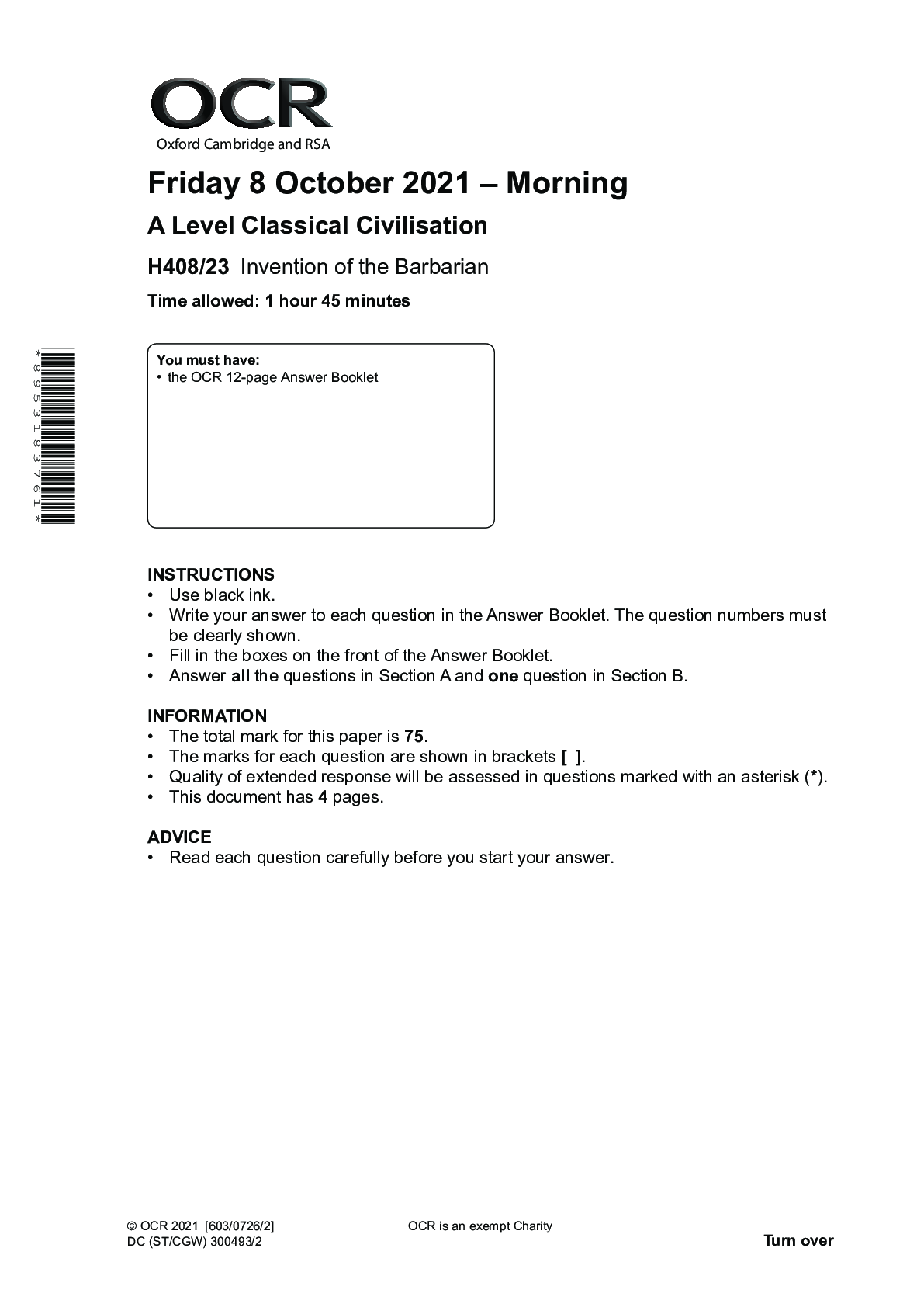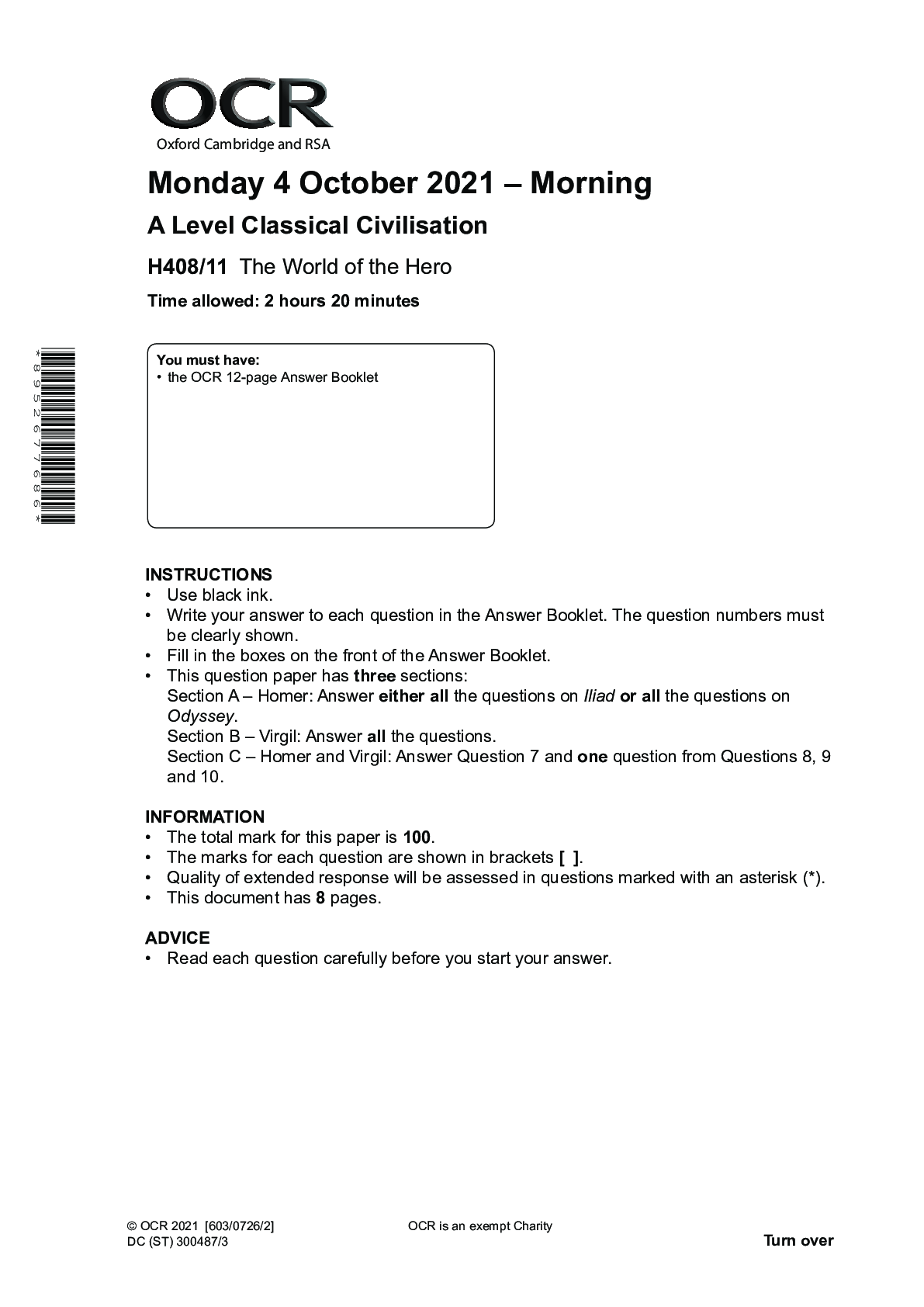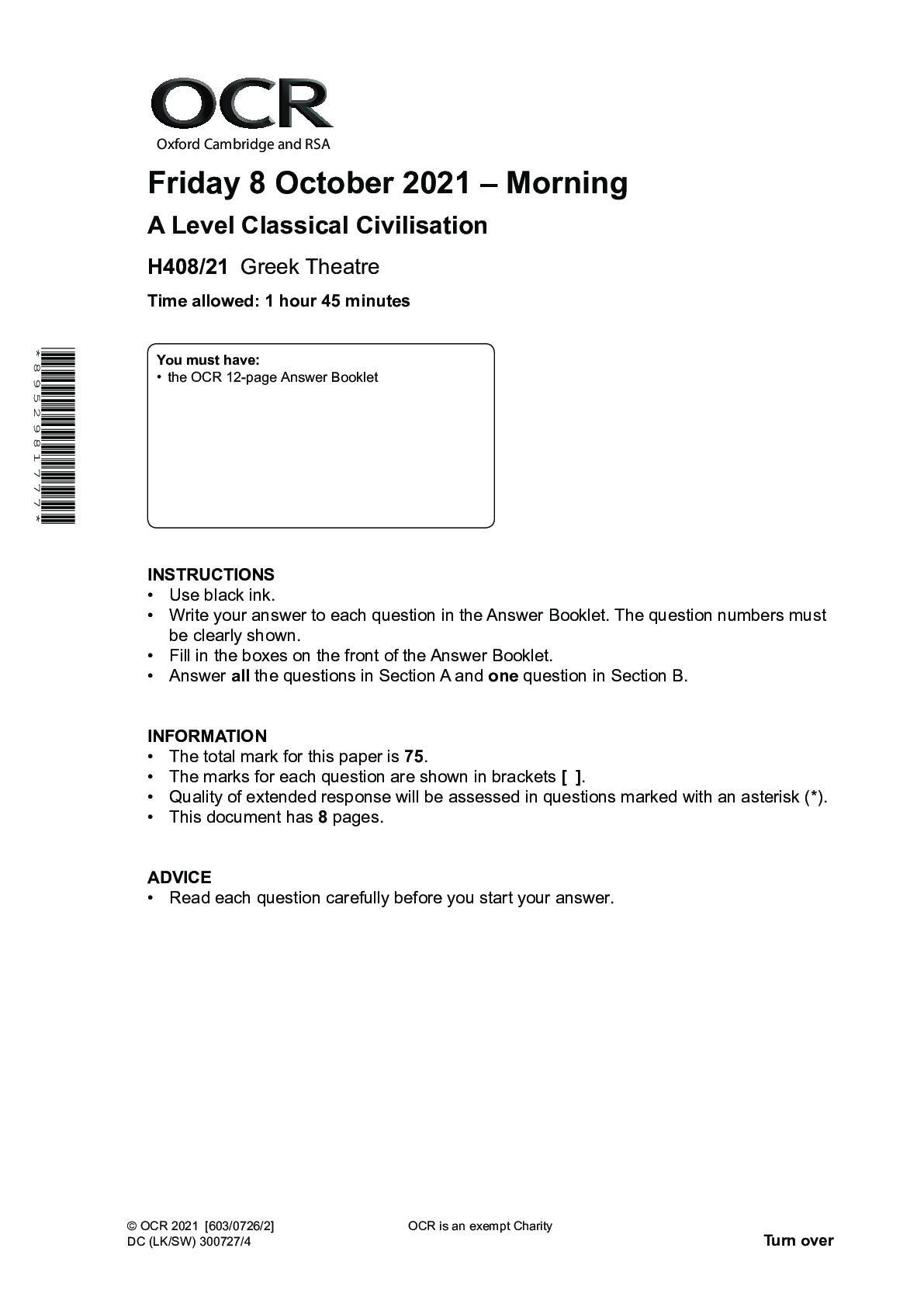Medical Studies > QUESTION PAPER & MARK SCHEME > AEMT Test 1 Questions AND ANSWERS GRADED A+ (All)
AEMT Test 1 Questions AND ANSWERS GRADED A+
Document Content and Description Below
AEMT Test 1 Questions AND ANSWERS GRADED A The movement of a solute from an area of higher concentration to an area of lower concentration is called: Select one: A. endocytosis. B. osmosis. C. ... exocytosis. D. diffusion. Correct Answer: D. Diffusion The term epigastric means: Select one: A. above or over the stomach. B. the inside of the stomach. C. to the left of the stomach. D. to the right of the stomach. Correct Answer: A. Above or over the stomach A physician authorizes you, via two-way radio, to help a patient administer prescribed nitroglycerin. What type of medical direction is this? Select one: A. Online medical control B. Standing order C. Indirect medical control D. Off-line medical control Correct Answer: A. Online medical control During two-rescuer CPR, the compressor and ventilator switch positions. While rescuer one is finishing his or her cycle of 30 compressions, rescuer two should: Select one: A. suction the patient's mouth and give two more ventilations. B. give two breaths and prepare to start compressions. C. move to the opposite side of the patient's chest. D. assess for a carotid pulse for 15 seconds. Correct Answer: C. Move to the opposite side of the patient's chest Within the first 30 minutes after birth, a neonate's: Select one: A. respiratory rate increases to around 60 breaths/min. B. pulse and respiratory rates increase significantly. C. pulse rate decreases to approximately 120 beats/min. D. pulse rate increases to between 160 and 180 beats/min. Correct Answer: C. Pulse rate decreases to approximately 120 beats/min You are dispatched to a call for a 4-month-old infant with respiratory distress. While you prepare to care for this child, you must remember that: Select one: A. small infants are nose breathers and require clear nasal passages at all times. B. assisted ventilations in infants often need to be forceful to inflate their lungs. C. the infant's proportionately small tongue often causes an airway obstruction. D. an infant's head should be placed in a flexed position to prevent obstruction. Correct Answer: A. Small infants are nose breathers and require clear nasal passages White blood cells that develop from B cells and produce large volumes of specific antibodies are called: Select one: A. mast cells. B. plasma cells. C. killer T cells. D. lymphocytes. Correct Answer: B. Plasma You respond to the scene of a 16-year-old pregnant woman with abdominal pain. Her friend called EMS because she was concerned. As you begin your assessment, the patient tells you that she feels better and does not want to go to the hospital. You should: Select one: A. advise the patient that she cannot refuse care. B. contact the patient's parents to obtain consent. C. have the patient sign a Refusal for Care form. D. explain the consequences of refusal of care. Correct Answer: D. Explain the consequences of refusal of care Authorization to use an automatic transport ventilator when transporting a patient requires which minimum level of EMS provider? Select one: A. EMR B. EMT C. Paramedic D. AEMT Correct Answer: B. EMT General guidelines for safe ambulance driving include all of the following, except: Select one: A. assuming that other drivers will not see you. B. regularly using the siren as much as possible. C. avoiding routes with heavy traffic congestion. D. avoiding one-way streets whenever possible. Correct Answer: B. Regularly using the siren as much as possible Which of the following is an uncontrollable risk factor for disease? Select one: A. Stress B. Genetics C. Smoking D. Poor diet Correct Answer: B. Genetics The preferred initial method for ventilating an apneic patient is the: Select one: A. bag-mask device with two rescuers. B. bag-mask device with one rescuer. C. manually triggered ventilation device. D. mouth-to-mask with one-way valve. Correct Answer: A. Bag-mask device with two rescuers In contrast to the dorsal respiratory group, the ventral respiratory group is: Select one: A. anatomically located within the pons and functions by terminating the inspiratory phase. B. primarily responsible for motor control of the inspiratory and expiratory muscles. C. responsible for initiating inspiration based on the information received from the chemoreceptors. D. controlled by the phrenic nerve, which innervates the diaphragm muscle and allows it to contract. Correct Answer: B. primarily responsible for motor control of the inspiratory and expiratory muscles. When energy impacts a body structure it: Select one: A. dissipates locally. B. causes a broad area of injury. C. translates into injury. D. penetrates the skin surface. Correct Answer: C. Translates into injury According to the terminal drop hypothesis: Select one: A. a person's physical health begins to decline after the age of 75 years. B. most late-stage adults retain high brain function until 1 month before death. C. mental function is presumed to decline in the 5 years preceding death. D. most elderly patients experience depression after the death of a loved one. Correct Answer: C. mental function is presumed to decline in the 5 years preceding death. In most cases, cardiopulmonary arrest in infants and children is caused by: Select one: A. respiratory arrest. B. a cardiac dysrhythmia. C. severe chest trauma. D. an ingested poison. Correct Answer: A. Respiratory arrest Which of the following questions would allow you to assess the "P" in the SAMPLE history? Select one: A. Has this ever happened to you before? B. Do you take any prescription medications? C. What were you doing when this episode began? D. Are there any medications you cannot take? Correct Answer: A. Has this ever happened to you before? A patient with liver failure has an abnormal accumulation of fluid in the peritoneal cavity. This is called: Select one: A. ascites. B. lymphatic edema. C. sacral edema. D. anasarca. Correct Answer: A. ascites. Which of the following techniques should you use to dislodge a foreign body airway obstruction in a patient who is in an advanced stage of pregnancy or who is very obese? Select one: A. Finger sweeps B. Abdominal thrusts C. Back blows D. Chest thrusts Correct Answer: D. Chest thrusts You arrive at the scene of a motor-vehicle crash where a small car has struck a tree head-on. You see one patient sitting in the driver's seat with the door open. Prior to exiting the ambulance, you should: Select one: A. document your observations on the run form. B. don the appropriate protective equipment. C. request a rescue team for vehicle extrication. D. observe the patient's mental status. Correct Answer: B. don the appropriate protective equipment. [Show More]
Last updated: 1 year ago
Preview 1 out of 21 pages
.png)
Reviews( 0 )
Document information
Connected school, study & course
About the document
Uploaded On
Dec 05, 2022
Number of pages
21
Written in
Additional information
This document has been written for:
Uploaded
Dec 05, 2022
Downloads
0
Views
78
.png)

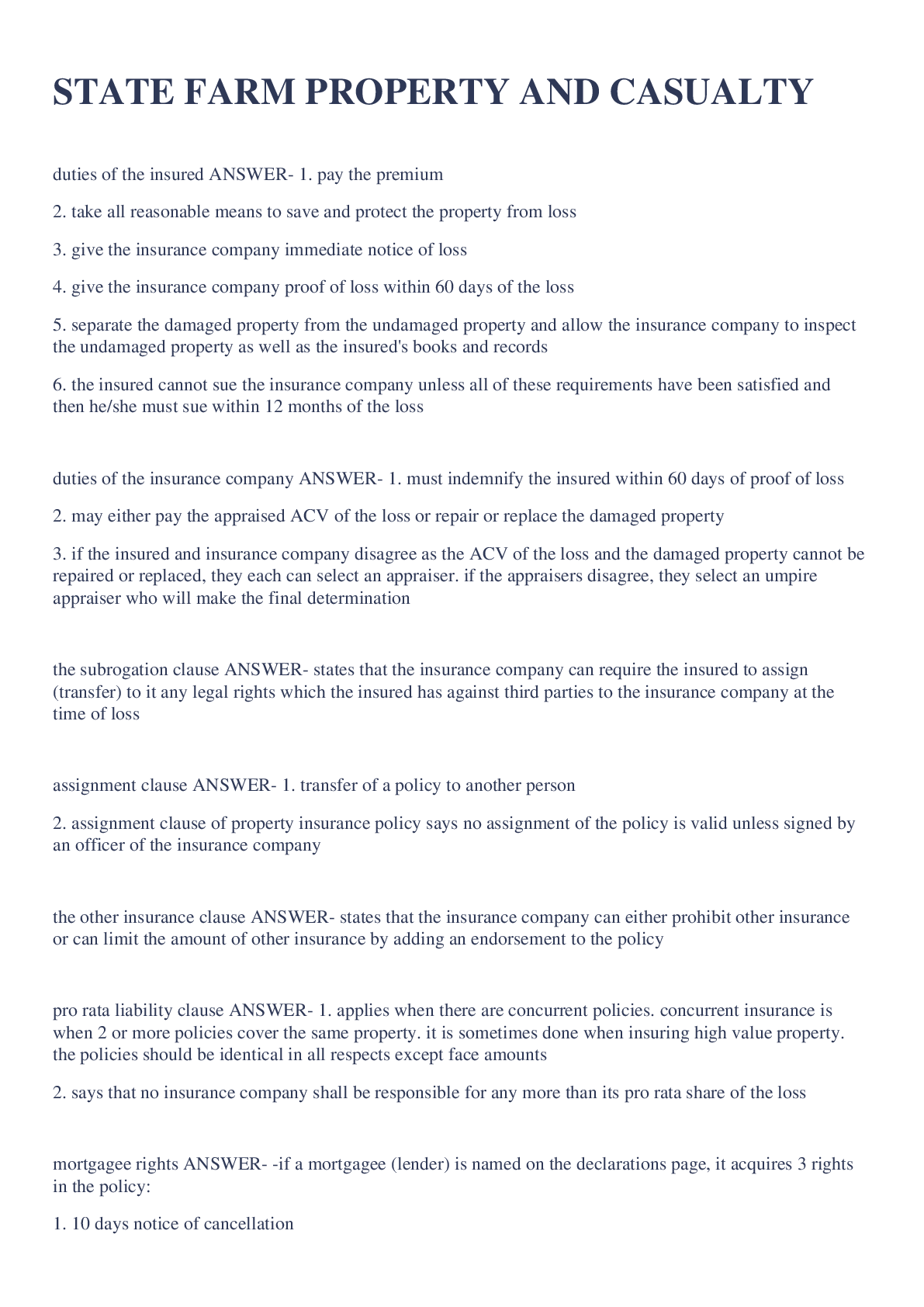


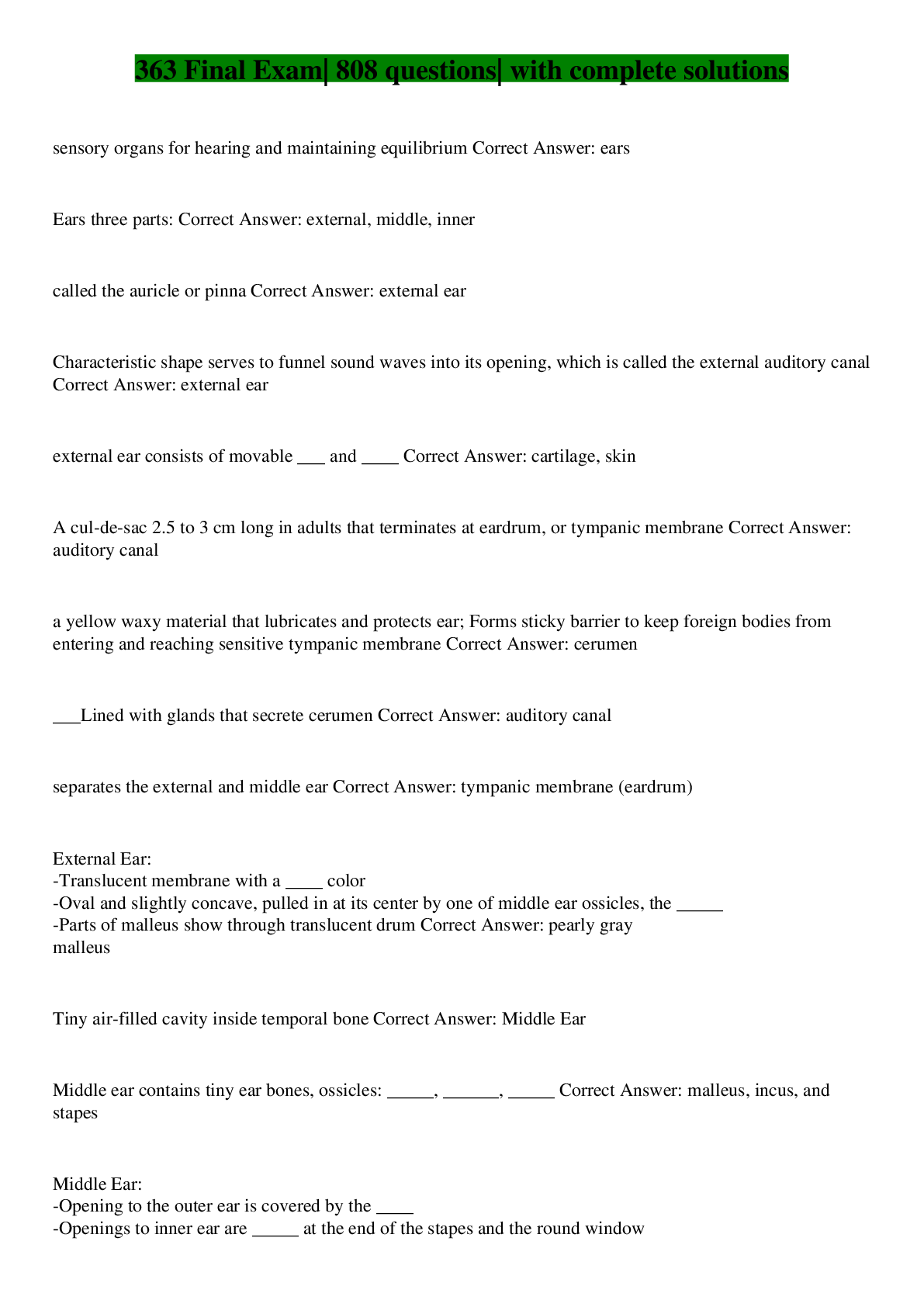

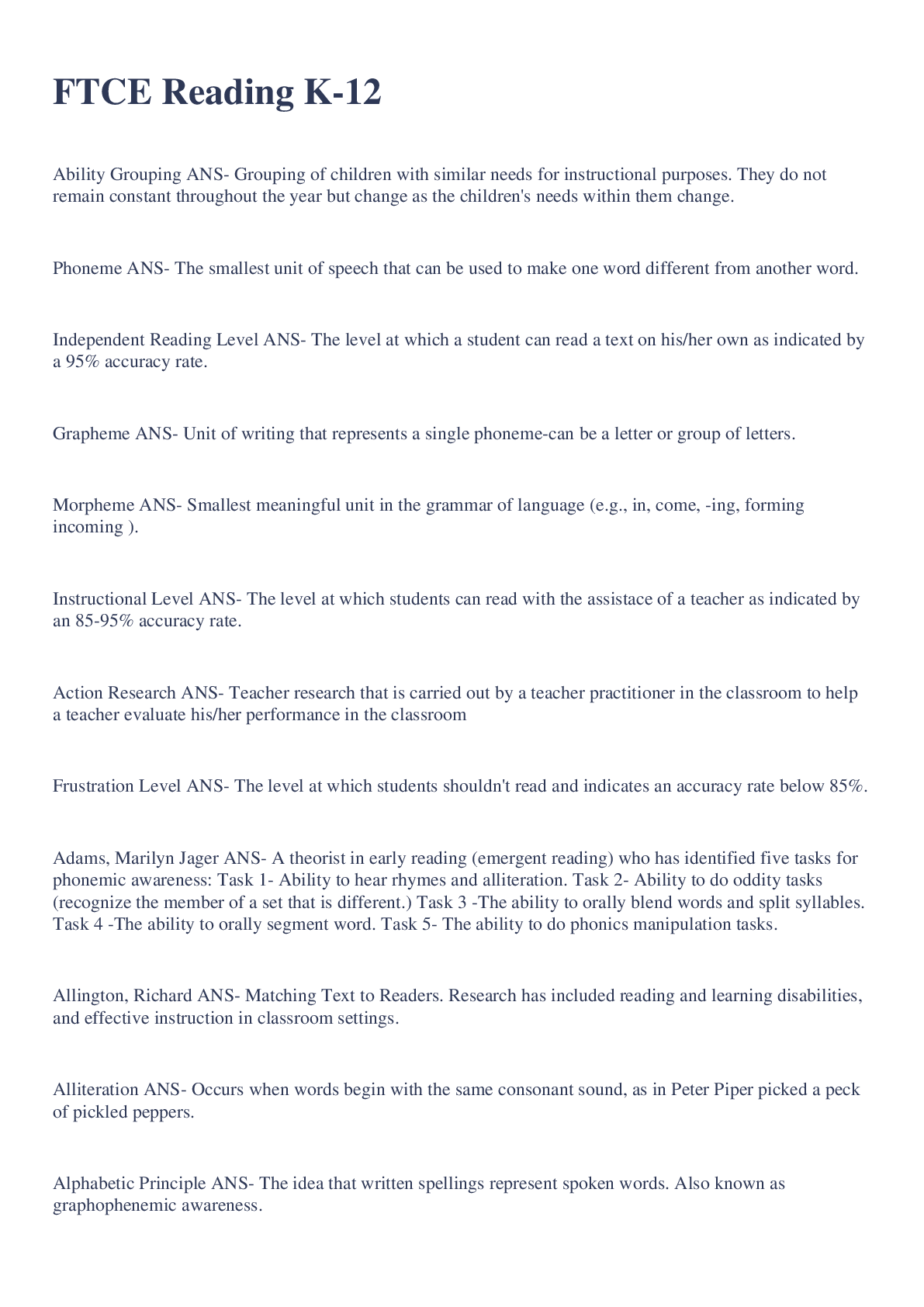
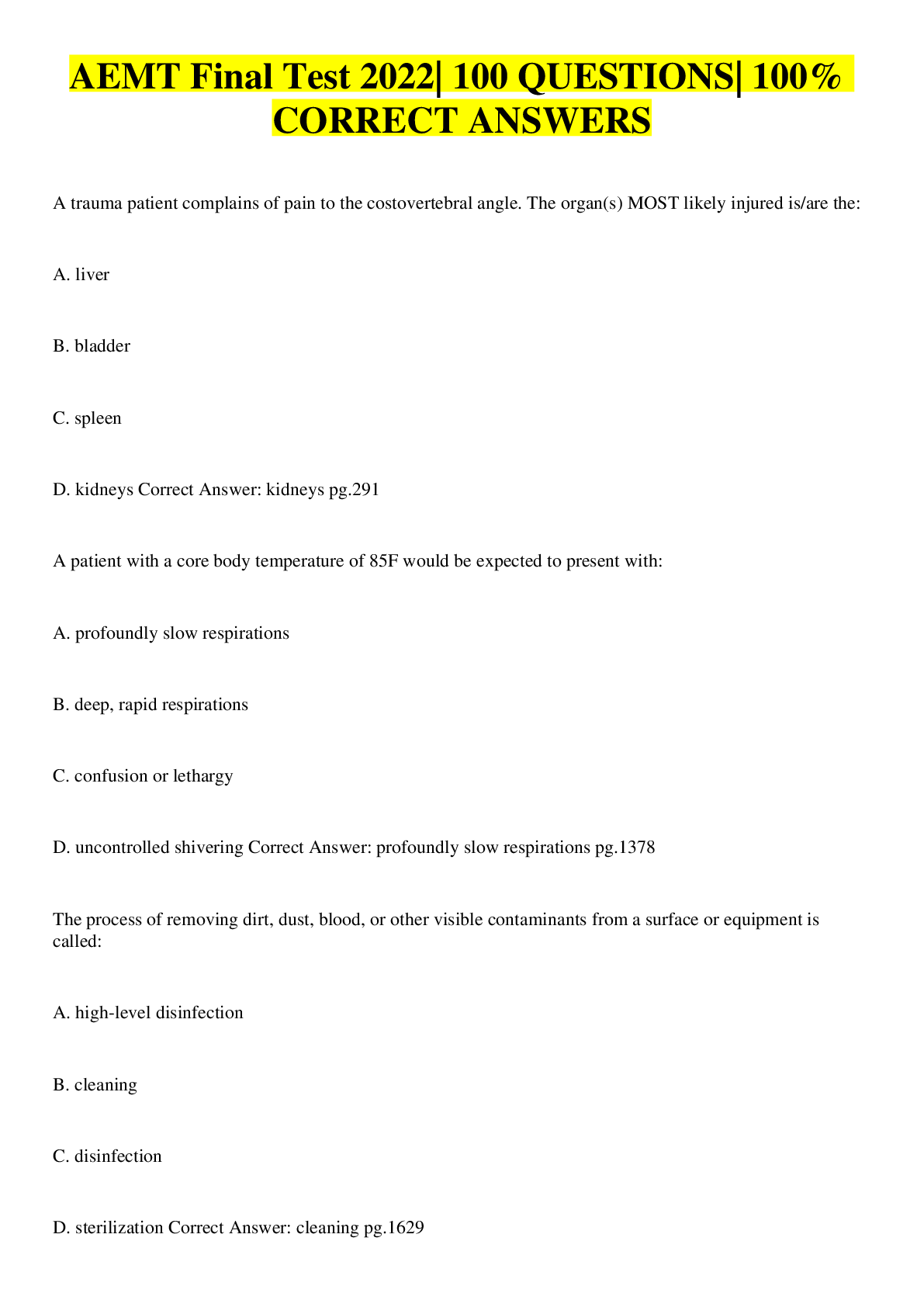
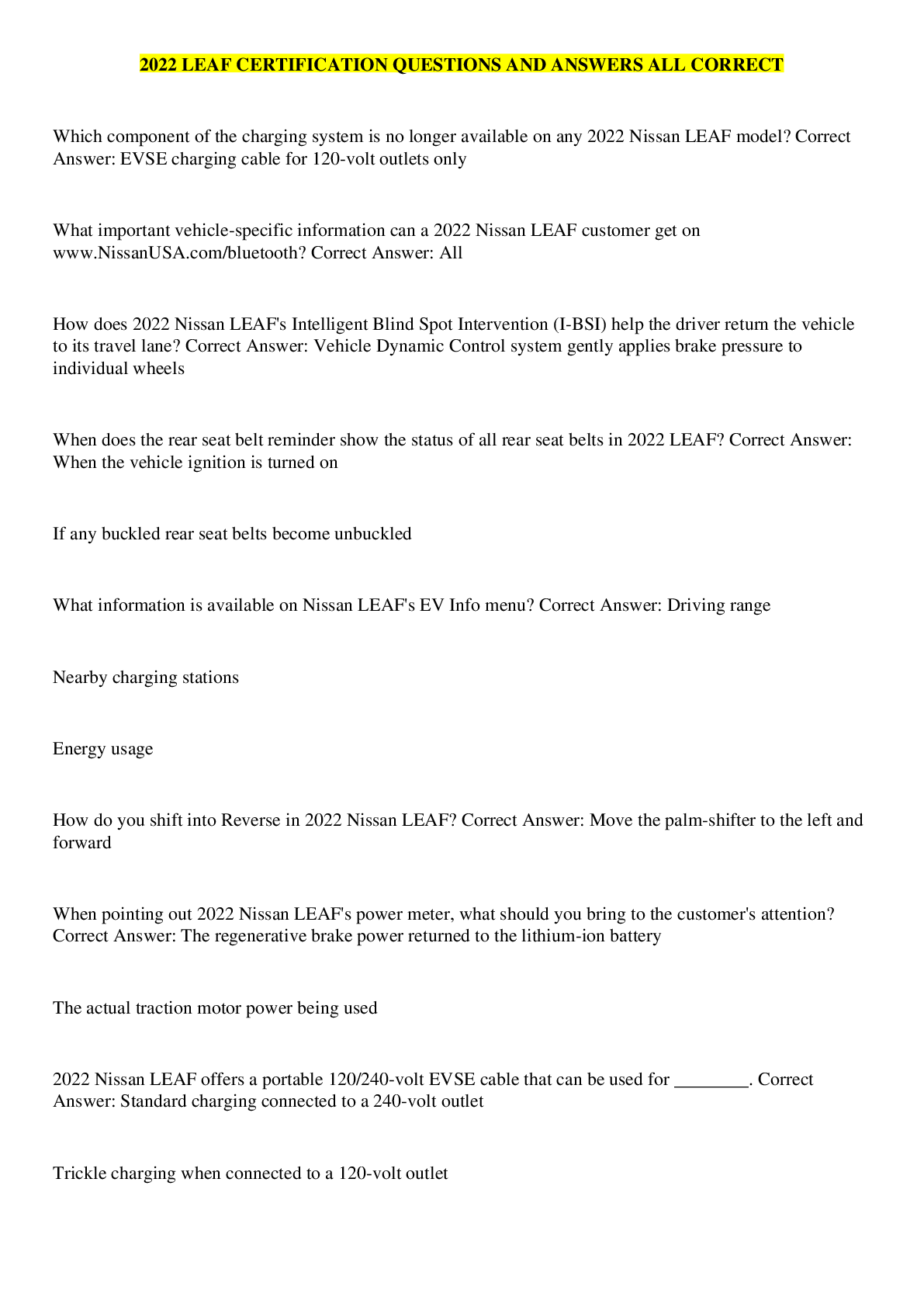
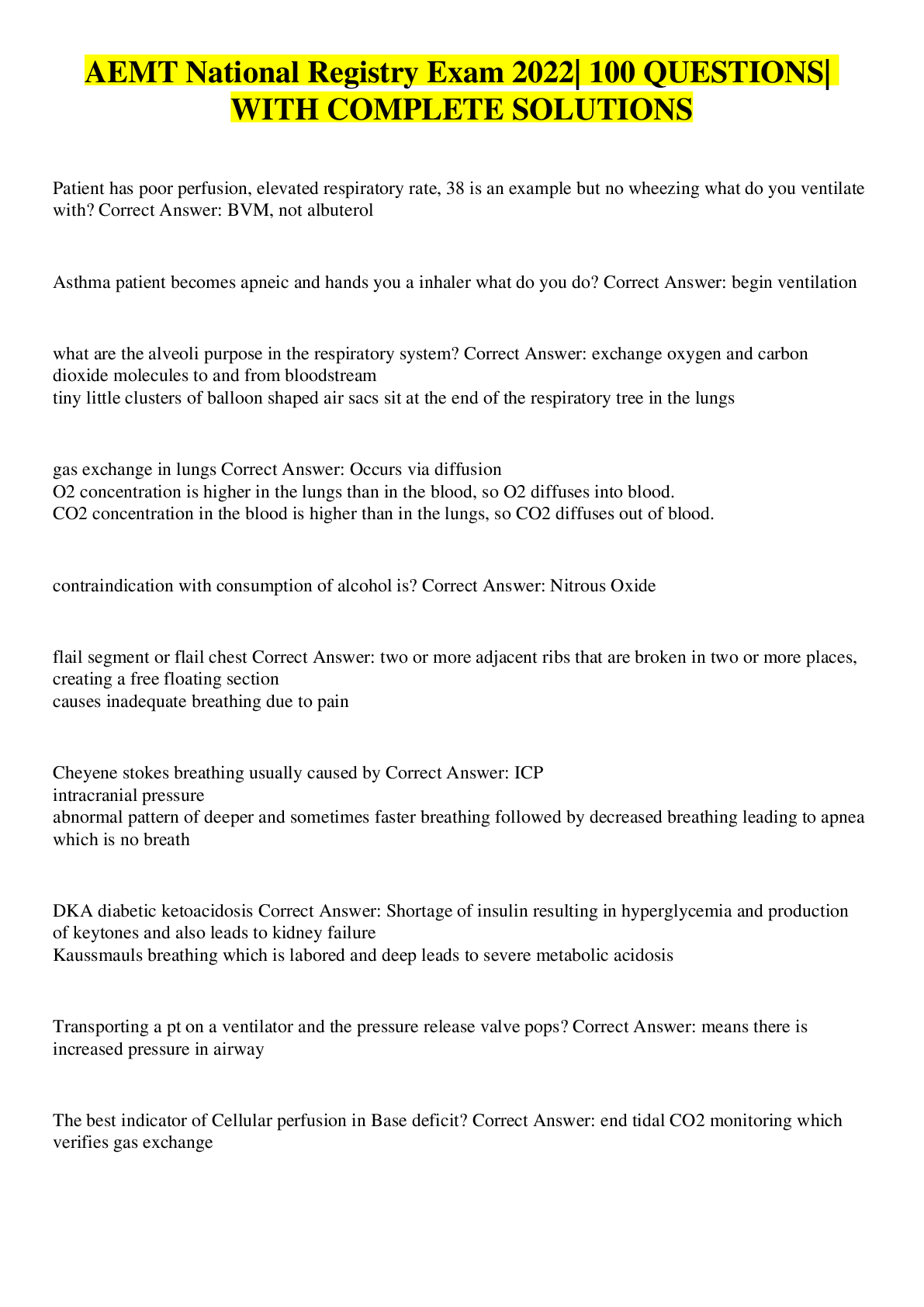
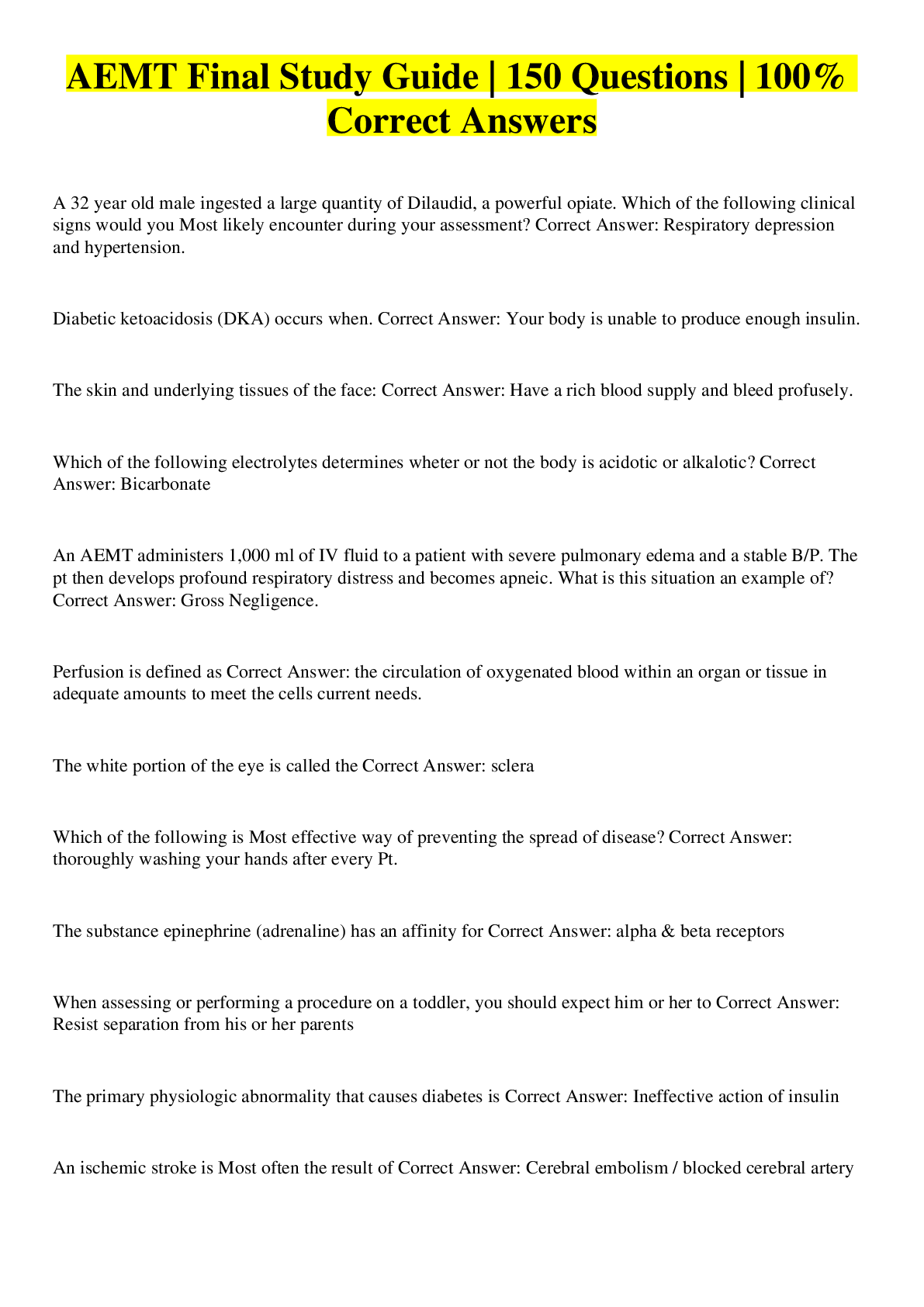
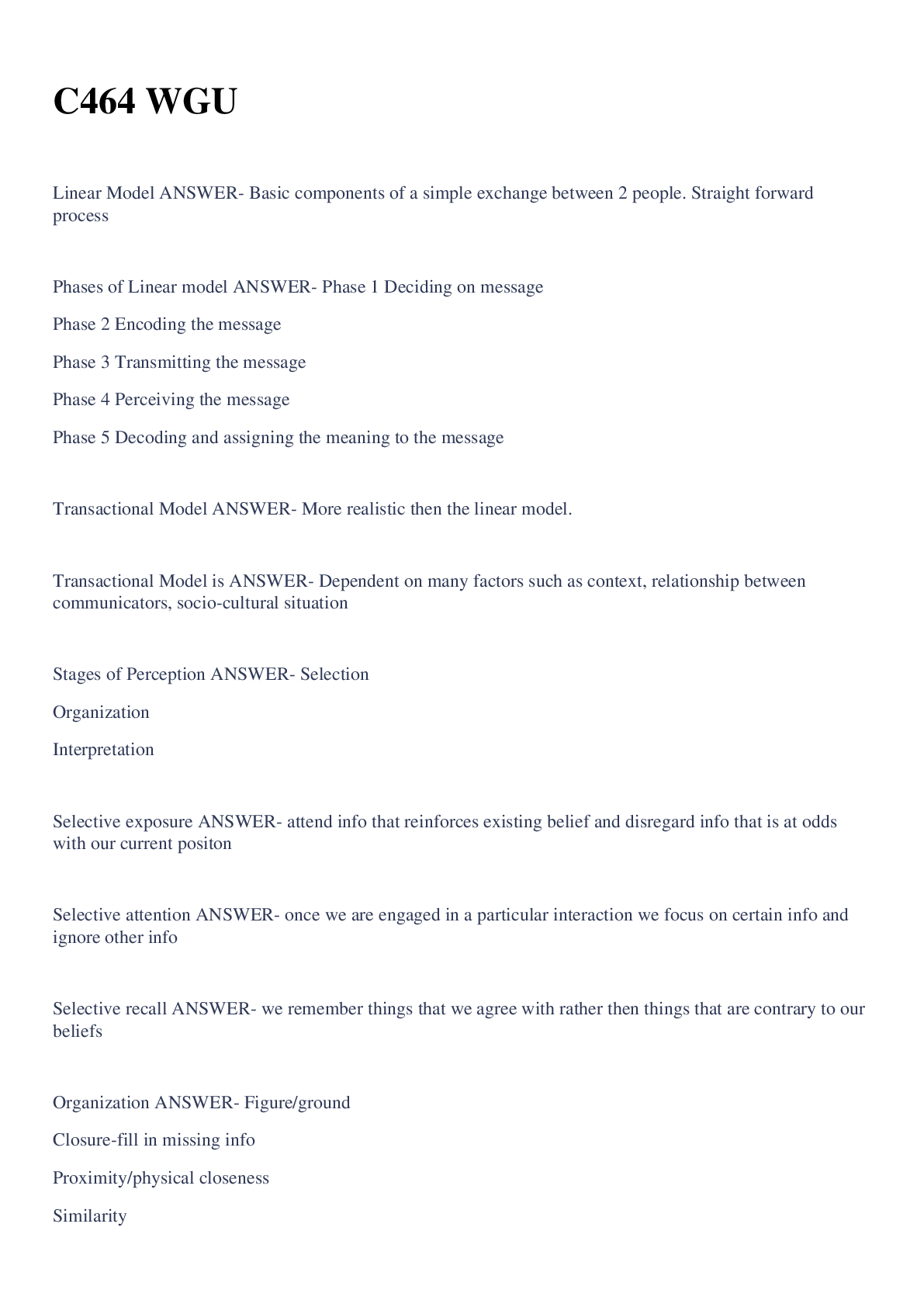
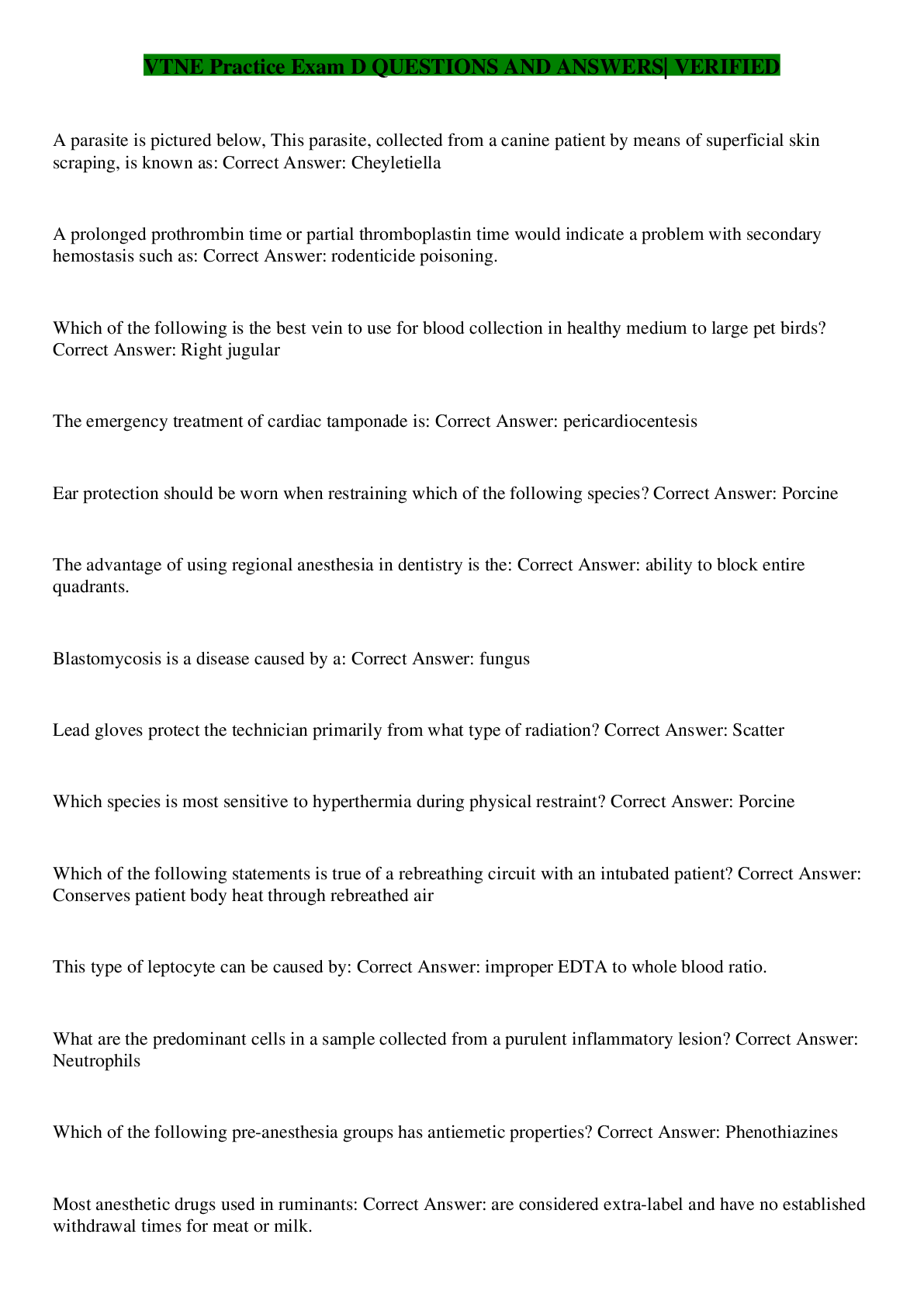
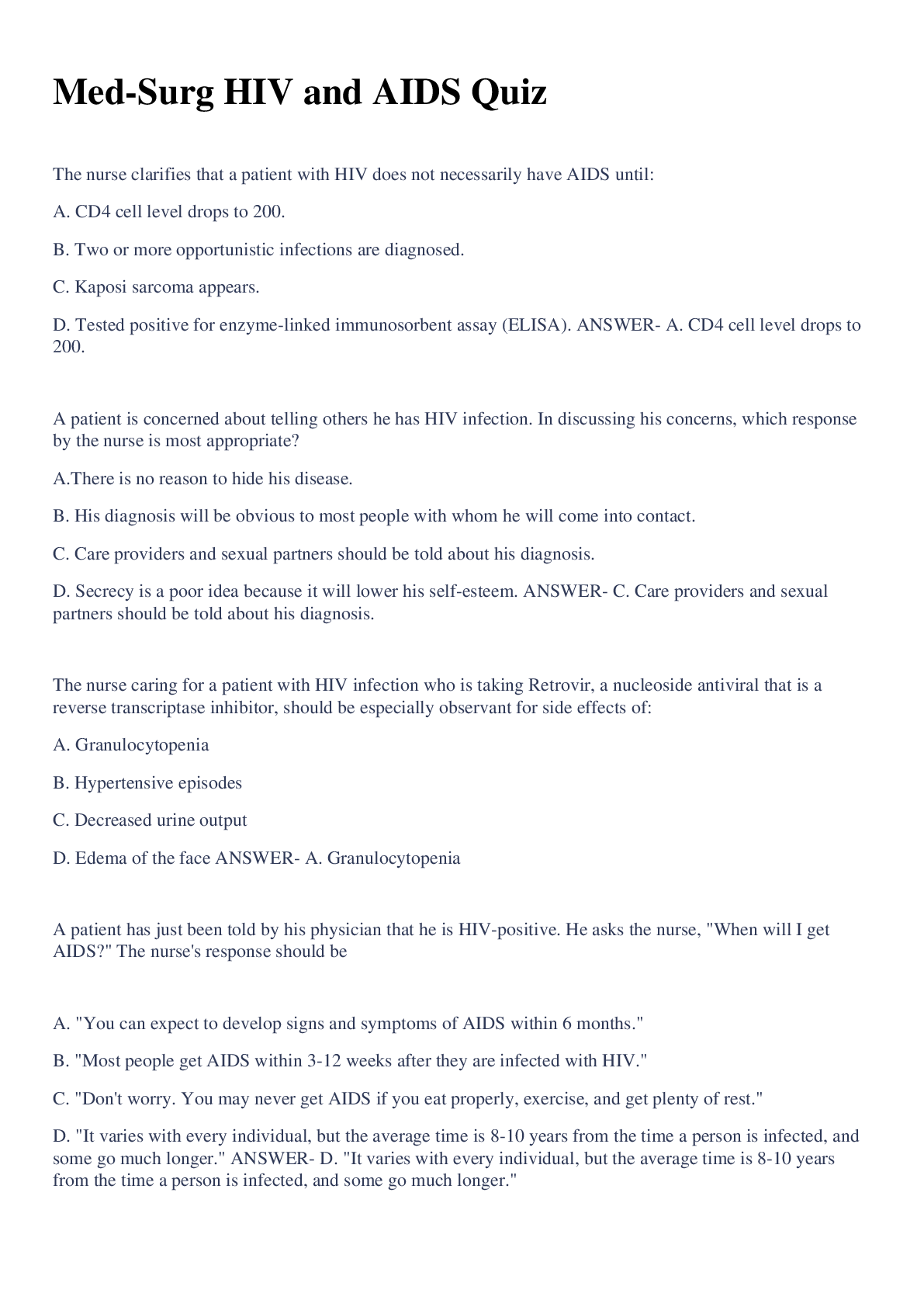



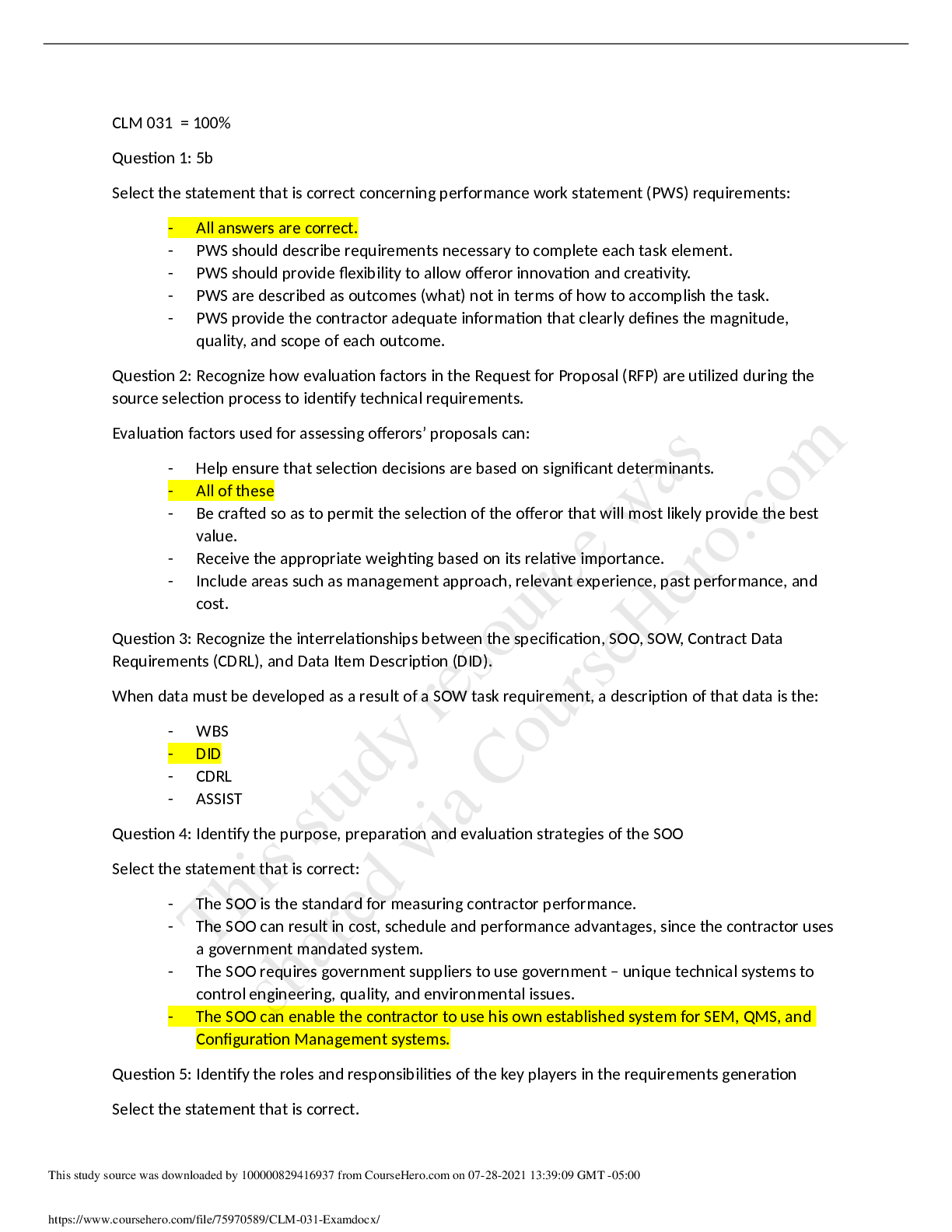
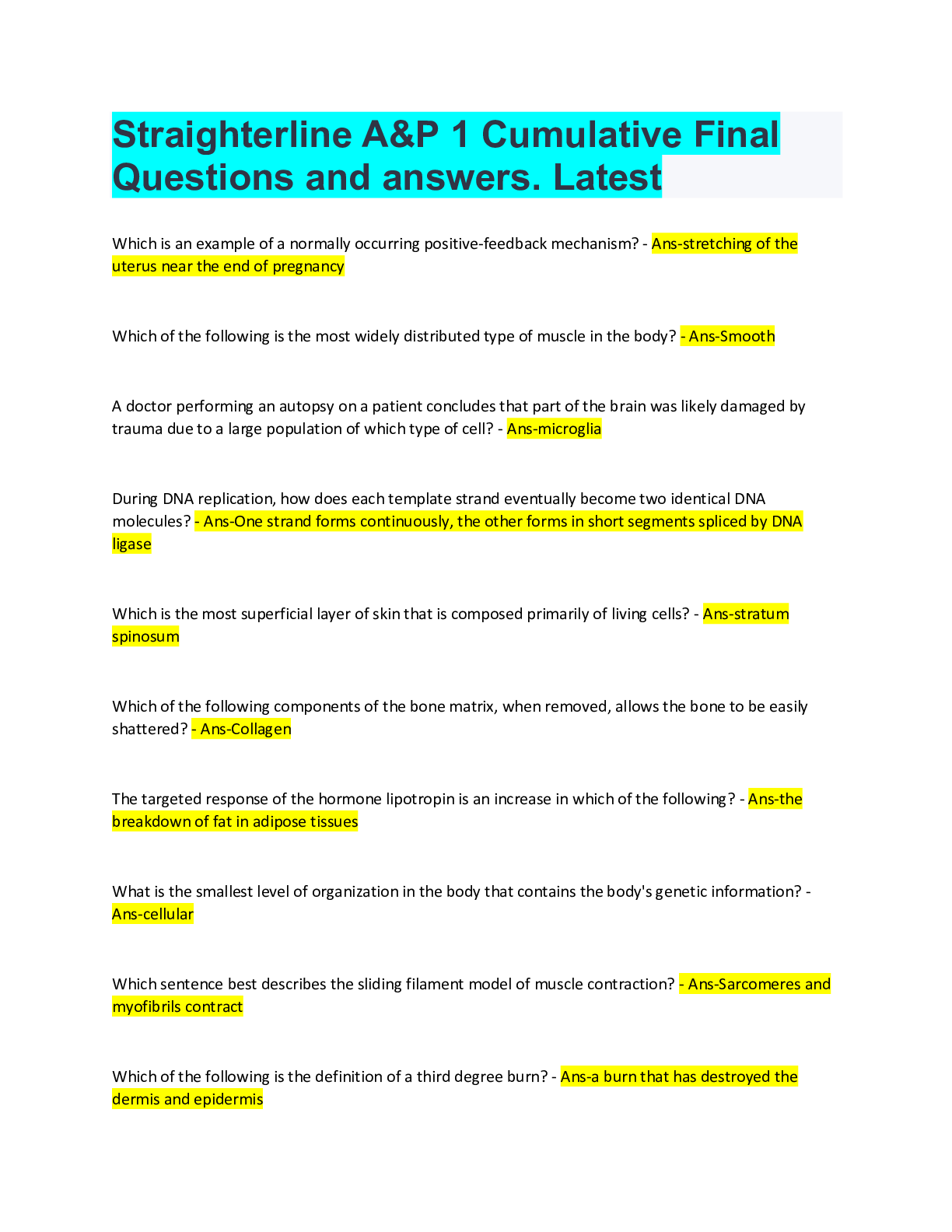

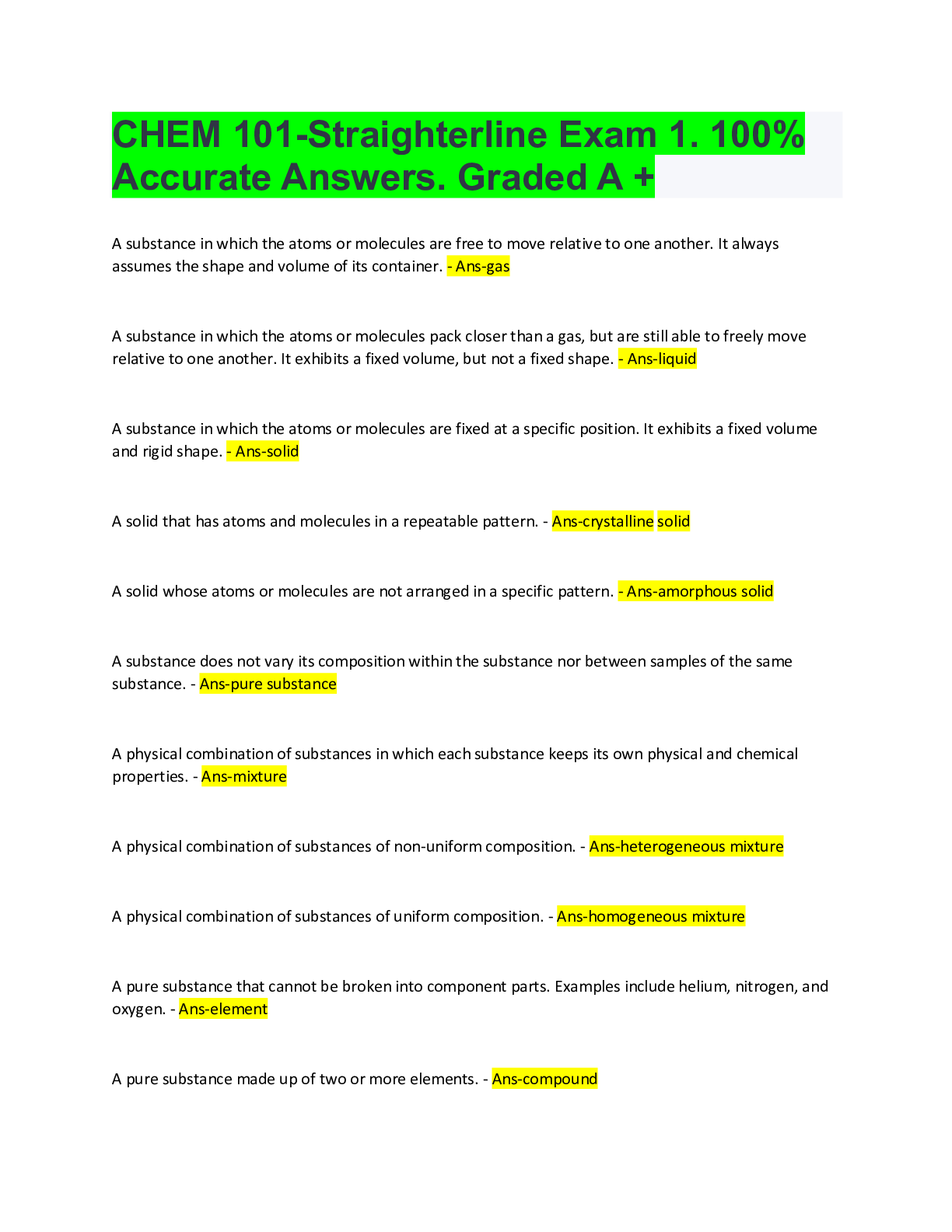
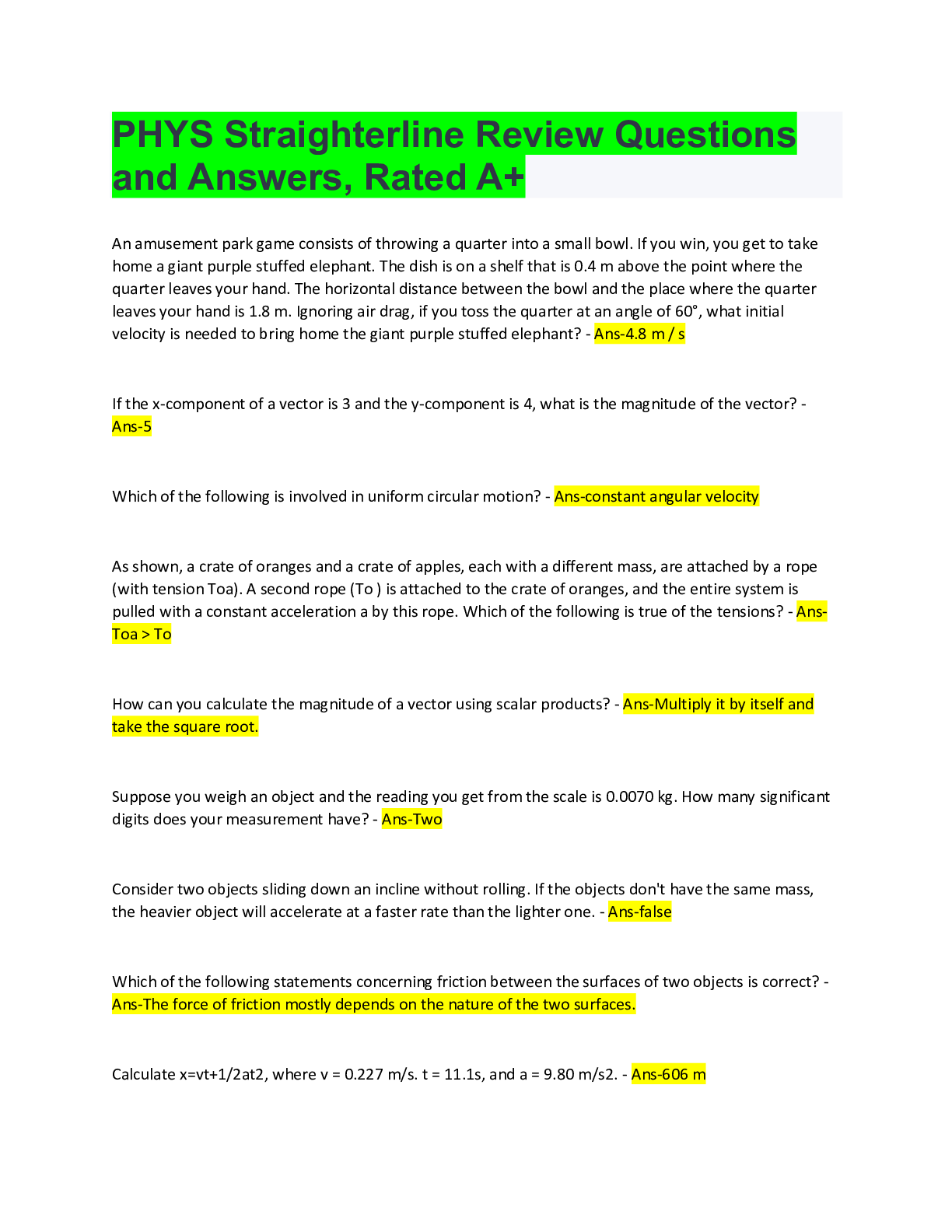
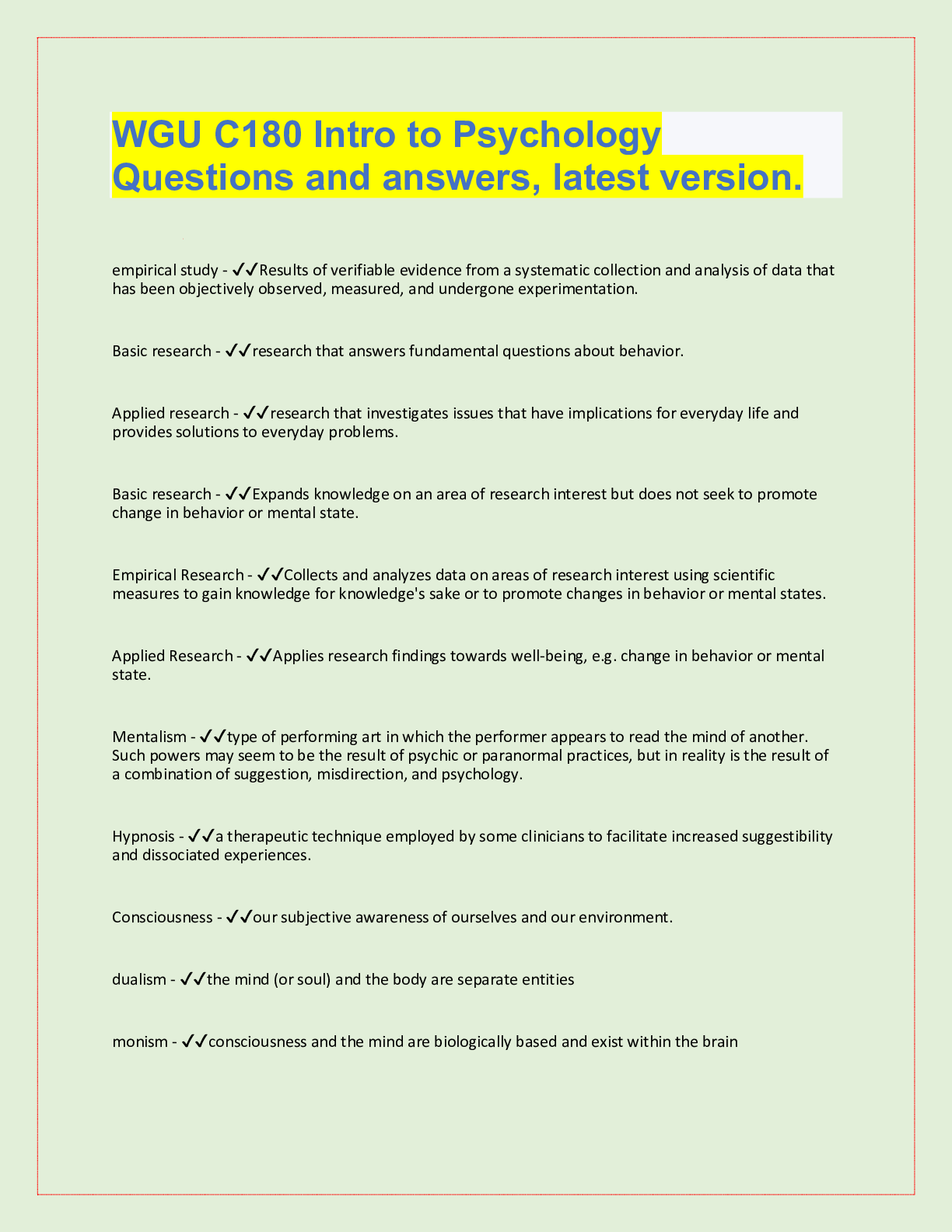
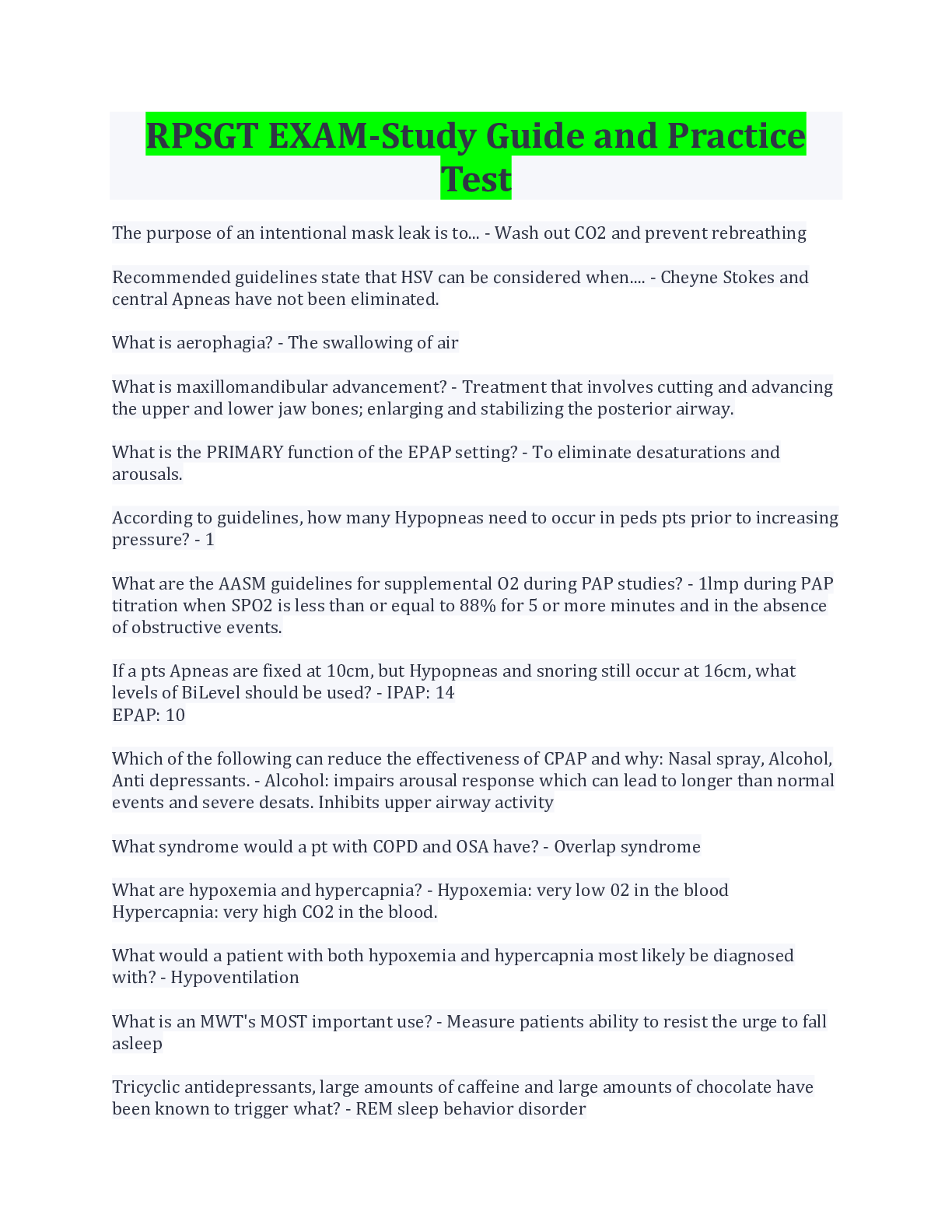

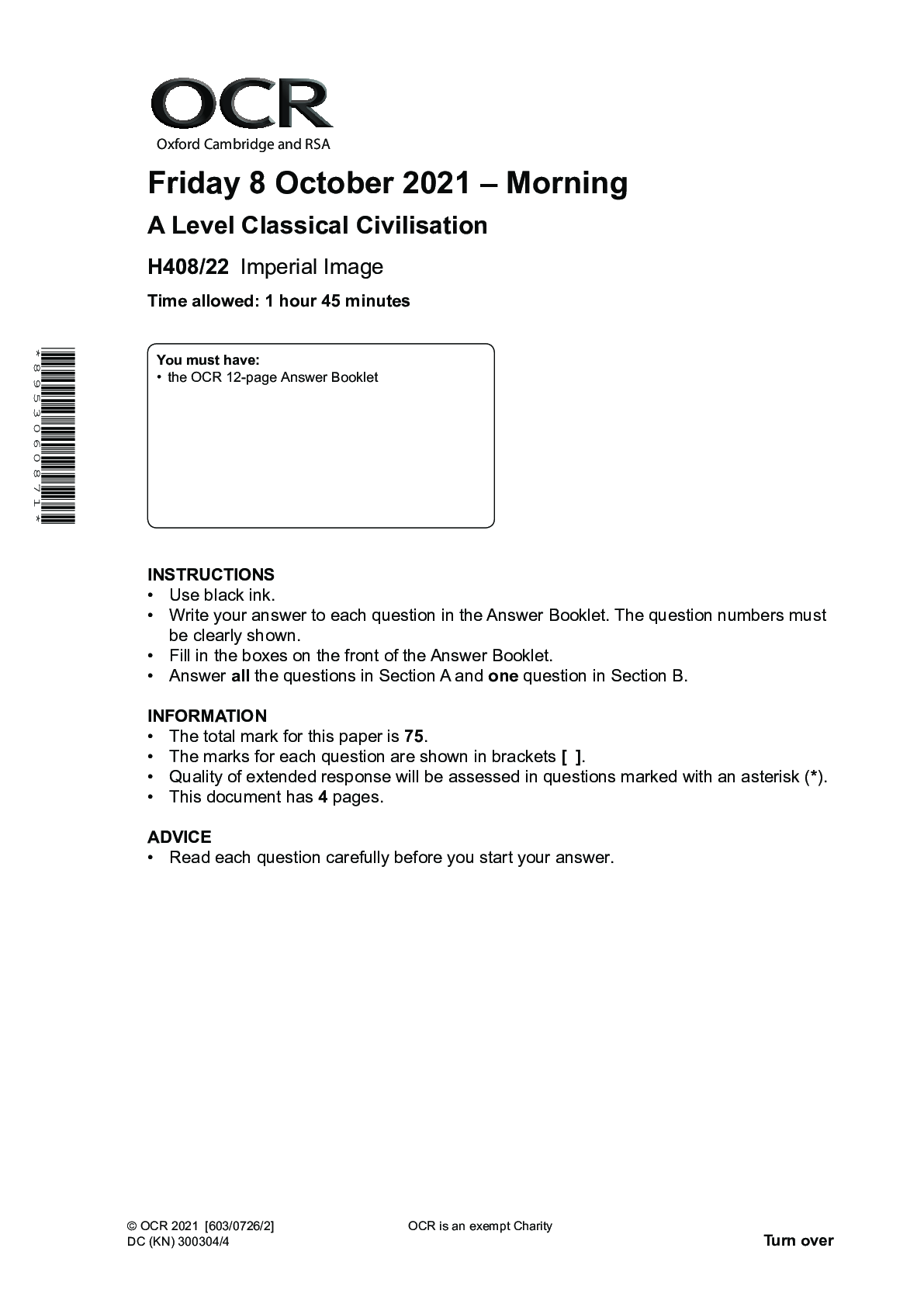
.png)
.png)
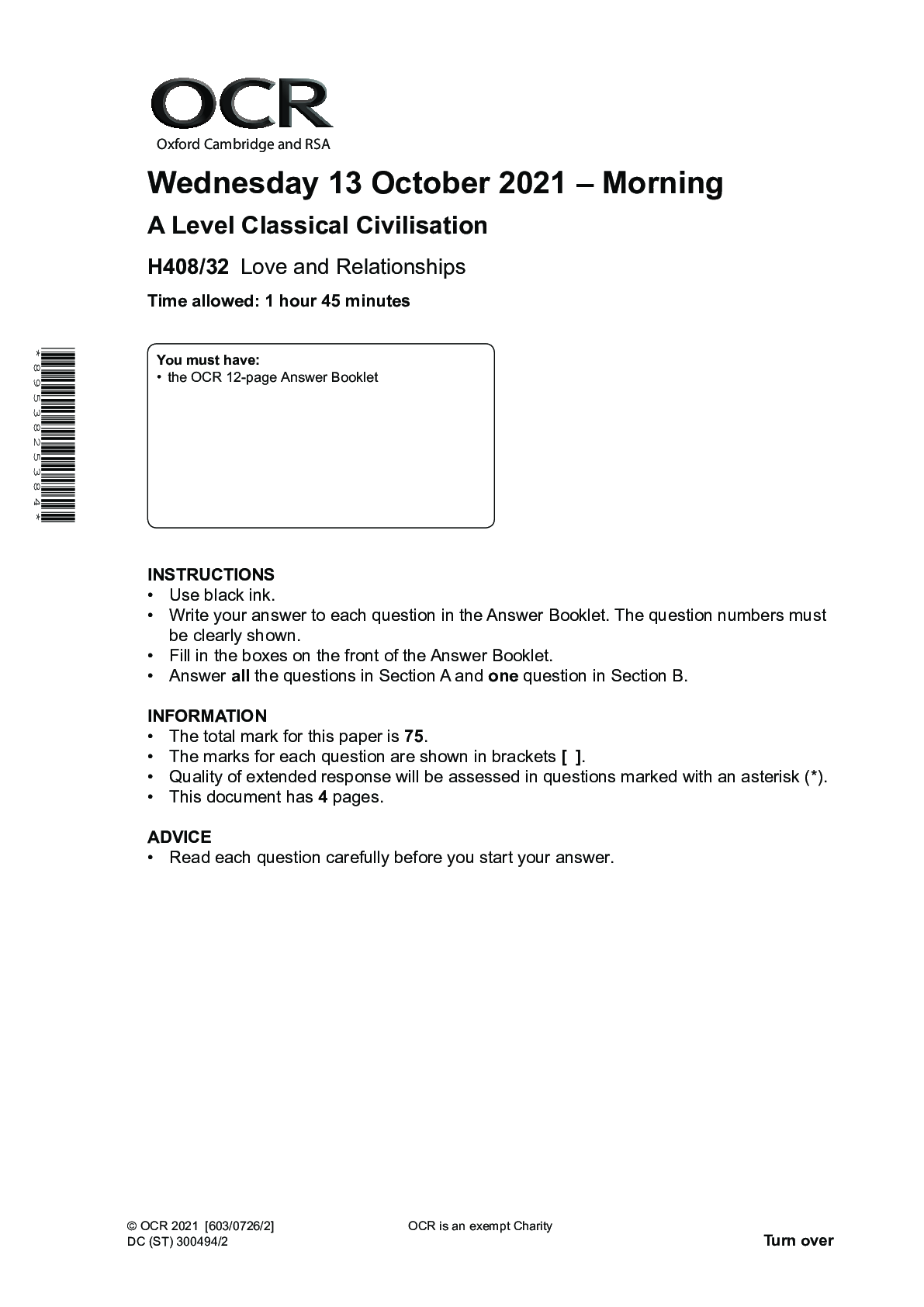
.png)

